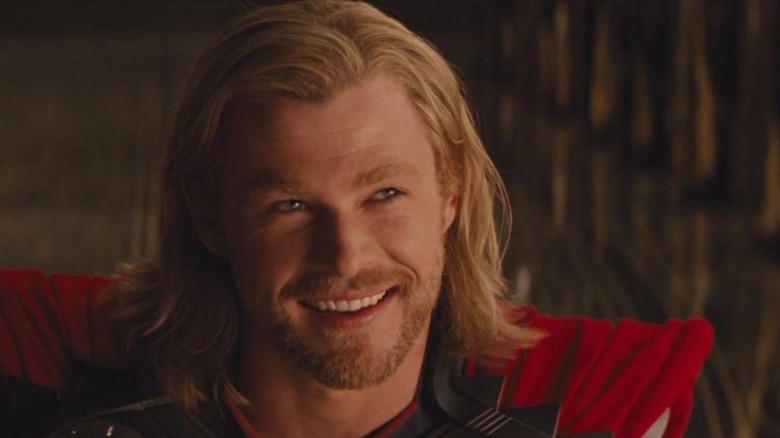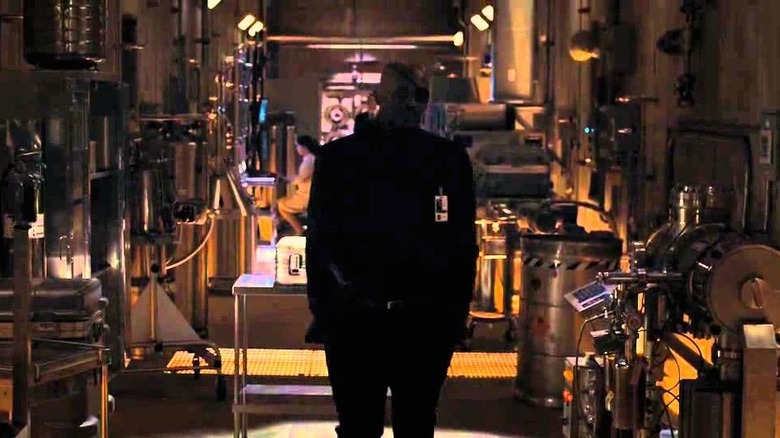How The Disastrous Thor Credits Changed Marvel Movie Filming Forever
Marvel movies are known for many things. They have likable leads and plenty of humor. There's a grand finale with a ton of CGI, and usually, a giant beam shot into the sky. And you always know not to leave the movie theater when the credits start to roll because all these movies (for the most part) have a mid- and/or post-credits sequence.
The post-credits scene has been essential viewing ever since 2008's "Iron Man." Tony Stark (Robert Downey Jr.) receiving a surprise visit from Nick Fury (Samuel L. Jackson) and a mention of the "Avengers Initiative" was all it took to convince fans to stay in their seats. On the surface, it may seem like a quick crowd-pleaser that's simple enough for Marvel Studios to film, but in one noteworthy instance, it was anything but.
You likely remember the post-credits scene to the first "Thor" movie. It involves Erik Selvig (Stellan Skarsgard) meeting with Nick Fury to talk about the Tesseract, as featured in "Captain America: The First Avenger." The scene laid the groundwork for the plot of 2012's "The Avengers," but it was a pain and a half to get the sequence in question filmed at all.
The use of 3D cameras made filming the Thor post-credit scene a hassle
The Marvel Cinematic Universe appears like such a well-oiled machine at this point; it's easy to forget its humble beginnings, which receive the lion's share of attention for this must-read book for any superhero fan, "The Story of Marvel Studios: The Making of the Marvel Cinematic Universe." The novel chronicles many of the growing pains that existed at the start of this massive franchise, and at one point, the author discusses how the studio came to a crossroads when it came to filming the "Thor" post-credit scene.
Joss Whedon helmed the scene in question as a lead-up to "The Avengers," which he would formally direct. He wanted to use the 90-second sequence as a test for 3D cameras to see if it would be feasible to shoot an entire movie with them. The answer would prove to be a resounding, "No."
Producer Jeremy Latcham is quoted in the book as saying, "It took so long to change a lens that it was truly awful. It was the longest day to shoot that tiny scene." The problem came down to issues from the 3D cameras, so a scene that should've been relatively painless to shoot soon devolved into catastrophe. Through the experience, Stellan Skarsgard was on the fence about whether he wanted to come back, which would've caused problems, seeing how he has a critical role in "The Avengers."
Latham added, "Stellan, whom we desperately needed to be in 'The Avengers' so he can tie the whole Loki thing together, came up to me and said, 'We're not going to shoot this movie on these cameras, are we? Because if we are, I will not be in this movie.'" From that point forward, 3D cameras weren't used on any Marvel productions. Instead, they were shot with regular 2D cameras and then converted into 3D in post-production. We'd bet Skarsgard was undoubtedly ecstatic with that news.

